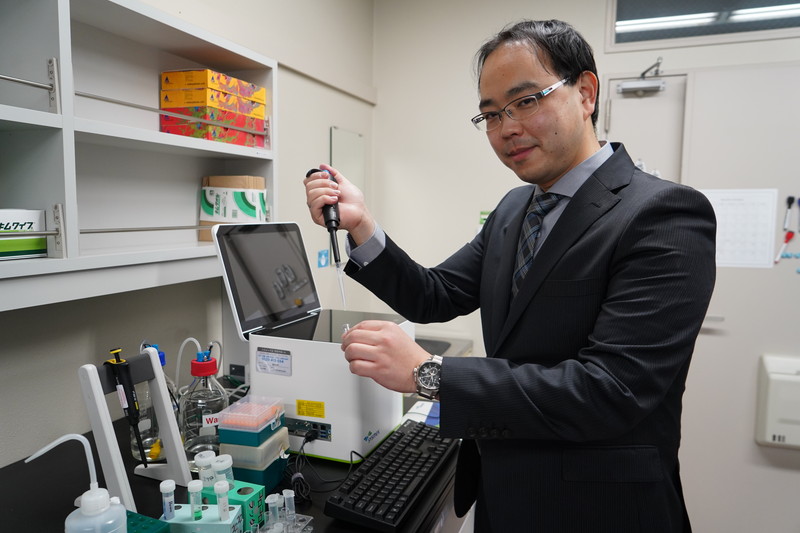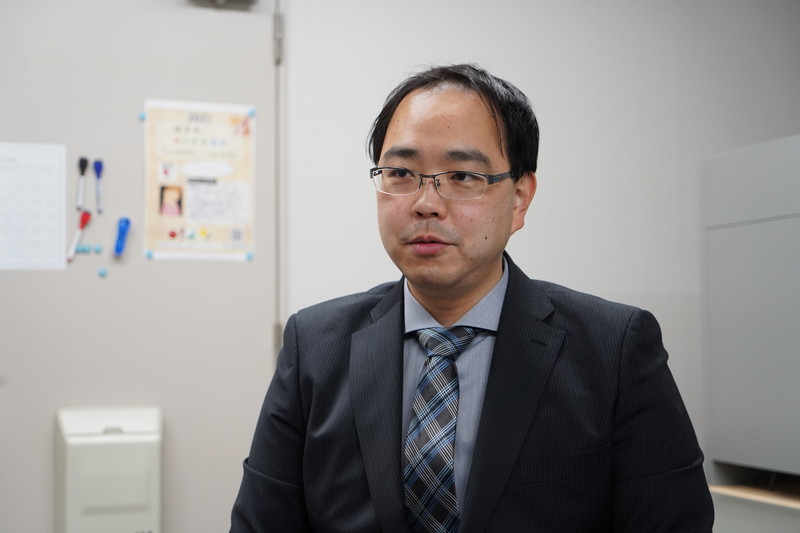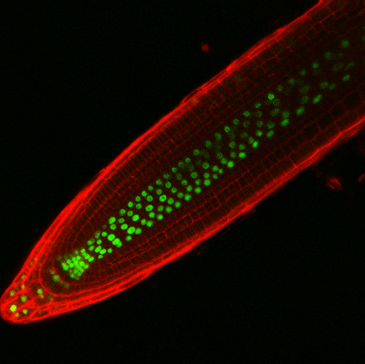NEWS
IROAST Researchers - Assoc. Prof. Takashi Ishida
English Japanese
Aiming to establish technology controlling the size of an organism by modulating genetic information

Assoc. Prof. Takashi ISHIDA
Faculty of Advanced Science and Technology
(Period at IROAST: from June 2016 to May 2021)
There are organisms having various sizes on the Earth. If the size of organisms can be freely manipulated, such technology will contribute not only to promoting the understanding of biological science but also to improving human life in the field of agriculture, livestock, and fisheries. Associate professor Takashi Ishida, who obtained tenure in June 2021, is aiming to establish technology able to control the size of living organisms.
■ Deciphering gene function using genome editing techniques
Q: Please tell us about the content of your current research.
Ishida: I am conducting research on the size control of living organisms, in particular how the sizes of individuals and cells are determined. I am interested in the phenomenon called "endoreduplication" which enhances the amount of genetic information in a cell. For example, in the case of humans, a child inherited a pair of genetic information; a half of their genetic information from their father and a half from their mother. Hence, cells in humans have two types of generic information; however, part of the cells undergo endoreduplication, doubling the gene and increasing the cell volume. Additionally, an increase in cell size also influences the size of the cell of the individual. It is a very mysterious phenomenon, and some aspects of why this occurs have not yet been clarified. I aim to resolve the mechanisms, especially discover the function of genes that are related to the size control using genome editing techniques.

Q: Was your previous research different to your current research?
Ishida: I was interested in the shape of organisms and had conducted various types of research to understand the mechanisms determining that, mainly with plants. Among these research projects, I have succeeded to apply a genome editing technique, namely CRISPR-Cas9 technology that was awarded the Nobel Prize in Chemistry in 2020, to discover the function of many genes; I am now using it in my current research. I first touched the technology around 2013 and think that it should be a “game changing” technology in modern biological science. Then I started to use it for my research projects, and was able to get the research on track during my time at IROAST. Now, this technology has become standard, I was able to use it effectively as I have many experiences. Currently, my research projects moved to basic biological science using the technology after my research at IROAST, which was the technical and practical development of it.
■ IROAST facilitated interaction and collaborative research with university researchers
Q: Why did you come to IROAST?
Ishida:Before coming to Kumamoto, I was a postdoc working in the RIKEN plant science center, Yokohama. During that time, I studied abroad for a short time at Utrecht University in the Netherlands as a visiting researcher, then after returning to Japan I worked at the Nara Institute of Science and Technology. After that, I came to Kumamoto, I have worked at the Graduate School of Science and Technology, Kumamoto University, as a researcher since 2013. I learned of IROAST’s open call for researchers, and when I looked at the program content, I thought it was perfect for me and applied.
The Faculty of Science at Kumamoto University is a one-department system, so there is a cohesiveness across disciplines. Therefore, there is a lively interaction between faculty members, and the environment encourages active research. This research environment is great, and wanting to continue my research at Kumamoto University was also part of the reason I applied to IROAST.
Q: What are the strengths of the tenure track system?
Ishida:Of course, the system provides an environment that allows researchers to concentrate on their research, such as maintaining equipment and allocating a budget for research, additionally, I found that being able to have contact with the university’s researchers as colleagues was a great advantage. A wide variety of researchers inquired about my research and provided me advice and support for my research.
There are also researchers in the Faculty of Science who are involved in IROAST. I conducted collaborative research projects with Professor Hayato Ishikawa from the Department of Chemistry (currently at Chiba University), Professor Tokio Tani from the Department of Biological Sciences, and Professor Takumi Higaki, who researched bioimaging at IROAST. The results we achieved in this research were only possible through collaboration of researchers from different fields, which lead to significant achievements for both IROAST and the Faculty of Science. Being able to conduct research with university researchers was also a great advantage.

■ Proactive exchange with foreign countries also led to collaborative research
Q: How was the exchange with foreign countries, such as joint international research?
Ishida: More than half of the research publications on genome editing techniques were published as collaborative research with other research groups, and all of this collaboration was with overseas research groups. I conducted collaborative research with more countries than I can count, including the United States, China, Germany, and Norway.
IROAST also provided proactive support, which enabled me to publish my research achievements overseas. I met researchers from overseas conducting similar research, and some of them commented, “Your research is far more advanced.”
Foreign researchers and Japanese researchers living abroad have also been invited to the university to exchange ideas. At this time, they also gave a seminar to the students, and the researchers told not only about their research but also about their life abroad. These exchanges have also led the good opportunities to start collaborative research.
Q: What is your message to young researchers?
Ishida: The tenure track period is a time to test your own strength, but you will also have unexpected encounters and the opportunity for stimulating interactions with researchers from a wide range of fields. When you come to IROAST you can improve your research with researchers from Kumamoto University, so I would definitely recommend researching together!
Related links
- IROAST Staff

